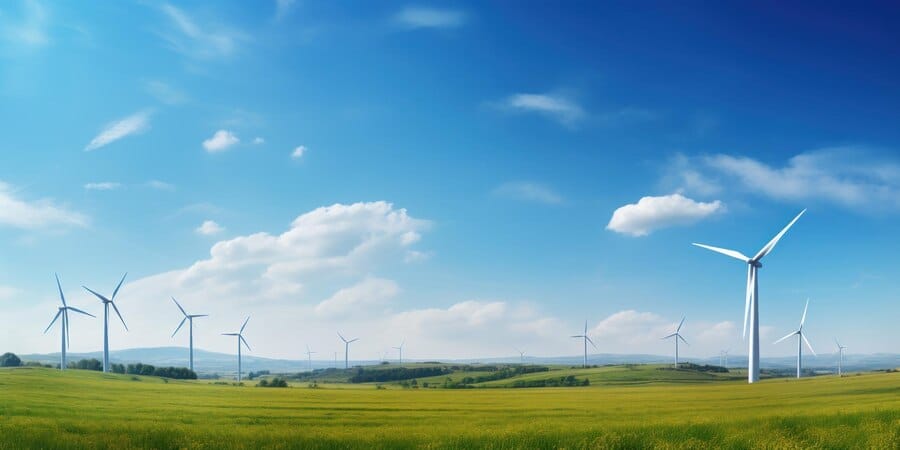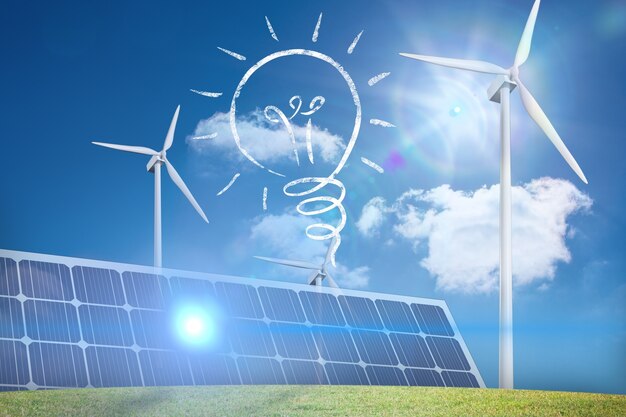7 Breakthrough Innovations in Clean Energy
Explore seven cutting-edge innovations in clean energy and their potential impact on the environment and society. Learn how these advancements are shaping the future of sustainable energy.

Introduction:

Innovations in clean energy are revolutionizing the way we power our world, offering sustainable alternatives to traditional fossil fuels. From breakthroughs in solar and wind technology to advancements in battery storage and grid optimization, the latest innovations in clean energy hold immense promise for addressing climate change and promoting environmental sustainability. In this article, we'll explore seven groundbreaking innovations in clean energy and their potential impact on the environment and society.
1. Advanced Solar Technologies
Advancements in solar technology, such as perovskite solar cells and bifacial panels, are making solar energy more efficient and affordable than ever before. Perovskite solar cells offer higher conversion efficiencies and lower production costs, while bifacial panels capture sunlight from both sides, maximizing energy generation. These innovations are driving down the cost of solar power and expanding its accessibility to a wider range of applications.
2. Offshore Wind Farms
Offshore wind farms harness the power of wind energy in coastal areas, where wind speeds are typically higher and more consistent. Recent innovations in offshore wind technology, such as floating turbines and larger rotor blades, are increasing energy yields and reducing the environmental impact of wind farms. As a result, offshore wind has emerged as a key contributor to the transition to renewable energy.
3. Energy Storage Solutions
Advancements in battery storage technology are enabling the integration of renewable energy sources into the grid more effectively. Lithium-ion batteries, flow batteries, and other storage solutions are providing reliable backup power, smoothing out fluctuations in energy supply, and enhancing grid stability. Energy storage systems are essential for maximizing the value of renewable energy resources and ensuring a reliable and resilient power supply.
4. Smart Grid Technology
Smart grid technology leverages digital communication and automation to optimize energy distribution, improve efficiency, and enhance reliability. Innovations such as advanced sensors, predictive analytics, and real-time monitoring enable utilities to better manage energy demand, detect outages, and integrate renewable energy sources into the grid. Smart grids are transforming the way we produce, distribute, and consume electricity, paving the way for a more sustainable energy future.
5. Hydrogen Fuel Cells
Hydrogen fuel cells offer a clean and efficient alternative to traditional combustion engines, producing electricity through a chemical reaction between hydrogen and oxygen. Recent advancements in fuel cell technology, such as improved catalysts and membrane materials, are increasing efficiency, reducing costs, and expanding the range of applications for hydrogen fuel cells. As a zero-emission energy source, hydrogen has the potential to play a significant role in decarbonizing transportation and industry.
6. Bioenergy Innovations
Bioenergy, derived from organic materials such as biomass and waste, offers a renewable and carbon-neutral alternative to fossil fuels. Innovations in bioenergy production, such as advanced biofuels and biogas technologies, are improving efficiency, reducing emissions, and diversifying fuel sources. By utilizing organic waste streams and sustainable feedstocks, bioenergy has the potential to contribute to a more sustainable and circular economy.
7. Artificial Intelligence in Energy Management
Artificial intelligence (AI) is revolutionizing energy management and optimization, helping to maximize efficiency, reduce costs, and minimize environmental impact. AI-powered algorithms analyze vast amounts of data to optimize energy consumption, predict demand patterns, and automate energy systems. From optimizing building HVAC systems to managing renewable energy resources, AI is driving innovation across the energy sector, enabling more sustainable and resilient energy infrastructure.
Conclusion:
The latest innovations in clean energy are propelling us toward a more sustainable and resilient future. From advanced solar technologies and offshore wind farms to energy storage solutions and hydrogen fuel cells, these breakthroughs are reshaping the way we produce, distribute, and consume energy. By harnessing the power of innovation and technology, we can accelerate the transition to a clean energy economy, mitigate the impacts of climate change, and build a brighter future for generations to come.
FAQs:
Q: Why are innovations in clean energy important?
A: Innovations in clean energy are important for addressing climate change, reducing reliance on fossil fuels, and promoting environmental sustainability.
Q: What are some examples of clean energy innovations?
A: Examples of clean energy innovations include advanced solar technologies, offshore wind farms, energy storage solutions, smart grid technology, hydrogen fuel cells, bioenergy innovations, and artificial intelligence in energy management.
Q: How do clean energy innovations impact the environment?
A: Clean energy innovations help reduce greenhouse gas emissions, air pollution, and environmental degradation associated with traditional fossil fuel energy sources, leading to cleaner air, water, and ecosystems.
Q: What role does technology play in advancing clean energy?
A: Technology plays a crucial role in advancing clean energy by driving down costs, improving efficiency, and expanding the accessibility and scalability of renewable energy sources.
Q: How can individuals and businesses benefit from clean energy innovations?
A: Individuals and businesses can benefit from clean energy innovations by reducing energy costs, improving energy security, and contributing to a more sustainable and resilient energy future.
Q: What are the challenges and opportunities associated with clean energy innovation?
A: Challenges associated with clean energy innovation include technological barriers, regulatory hurdles, and economic constraints, while opportunities include job creation, economic growth, and environmental protection.